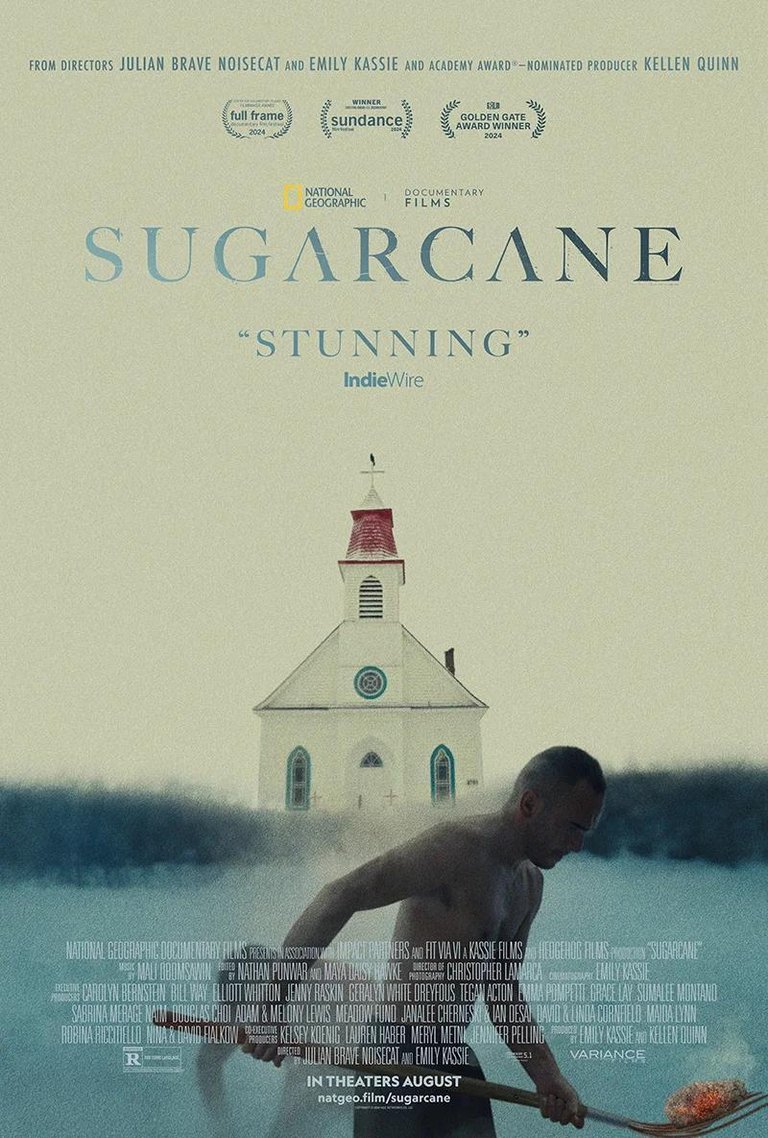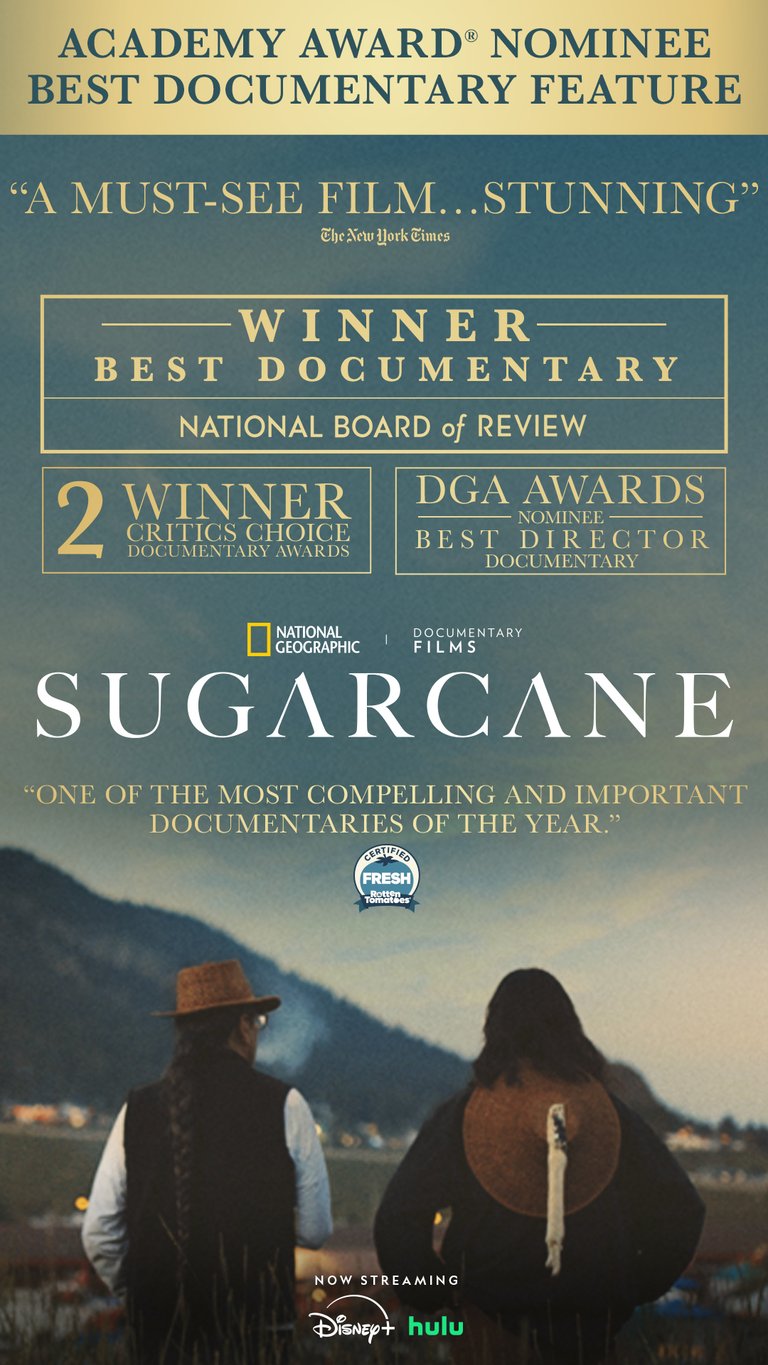Sugarcane (2024): blood stains on the hands of god | manchas de sangre en las manos de dios
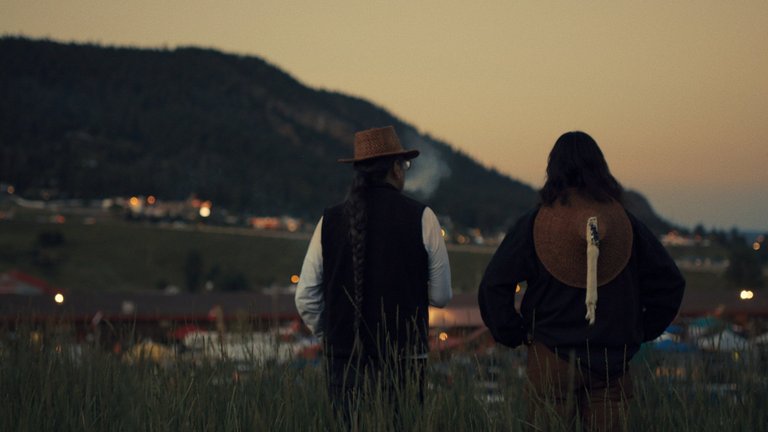
It must be very difficult for the members of the academy to choose which are the best five documentaries of the year. The themes they address are so varied and so important to know and disseminate, in addition to how well done they usually are, that by reducing an entire year of productions to five titles they necessarily have to leave good documentaries off the list. Now, what is certain is that those that make it to the final list are films that must be seen because there are compelling reasons for them to have made it this far.
Debe ser muy difícil para los miembros de la academia escoger cuáles son los mejores cinco documentales del año. Son tan variadas las temáticas que abordan y tan importantes de conocer y difundir, además de lo bien hechos que suelen estar, que al reducir todo un año de producciones a cinco títulos tienen que necesariamente dejar buenos documentales fuera de la lista. Ahora bien, lo que sí es cierto es que los que logran estar en la lista final son films que hay que ver porque hay razones de peso para que hayan llegado tan lejos.
Sugarcane is proof of that. Directed by Julian Brave NoiseCat and Emily Kassie (who is also in charge of photography along with Christopher LaMarca) this documentary tells a story that goes back almost a hundred years and branches off into so many others that it's difficult to measure the impact it could and may have had on those who found themselves in the middle. At this stage of the game, it's no secret that the Catholic Church is an institution that has been involved in thousands and thousands of controversies, allegations and abuses throughout the world. In Latin America, Europe, Africa and in almost every corner of the world where the evangelizing and colonizing arm of this millenary institution has reached, there have been men (and in some cases also women) who, protected by the power of the church and the “divine will”, have committed crimes and reprehensible actions abusing the defenselessness, innocence or ignorance of some communities. As part of its evangelizing mission in North America, over many years, the church founded and built hundreds of residential schools for the indigenous communities of the new world. That, in itself, was a questionable action; does bringing the message of God to the world also imply wiping out the culture of these populations? Replacing their language with English, their gods with Jesus Christ, their clothing with the modern dress code and teaching the customs of a world foreign to the one they have always known, is not that a way of assassinating that identity? The church, we know, was a useful and effective tool for the colonizers since the 15th century.
Sugarcane es una prueba de ello. Dirigido por Julian Brave NoiseCat y Emily Kassie (quien además se encarga de la fotografía junto a Christopher LaMarca) este documental cuenta una historia que se remonta a casi cien años y que se ramifica en tantas otras que es difícil medir el impacto que pudo y que puede tener entre quienes se encontraron en medio. A estas alturas del partido, para nadie es un secreto que la Iglesia Católica es una institución que se ha visto involucrada en miles y miles de polémicas, denuncias y abusos a lo largo y ancho del mundo. En Latinoamérica, Europa, África y en casi todos los rincones del mundo a los que ha llegado el brazo evangelizador y colonizador de esta milenaria institución, han llegado hombres (y en algunos casos también mujeres) que, amparados en el poder de la iglesia y en la "voluntad divina", han cometido crímenes y acciones condenables abusando de la indefensión, la inocencia o la ignorancia de algunas comunidades. Como parte de su misión evangelizadora en América del Norte, a lo largo de muchos años, la iglesia fundó y construyó centenares de escuelas residenciales para las comunidades indígenas del nuevo mundo. Eso, ya de por sí, era una acción cuestionable, ¿llevar el mensaje de Dios al mundo implica también acabar con la cultura de estas poblaciones? Sustituir su lengua por el inglés, sus dioses por Jesucristo, su ropa por el código de vestimenta moderno y enseñar las costumbres de un mundo ajeno al que han conocido siempre, ¿no es acaso una forma de asesinar esa identidad? La iglesia, lo sabemos, fue una herramienta útil y efectiva para los colonizadores desde el siglo XV.
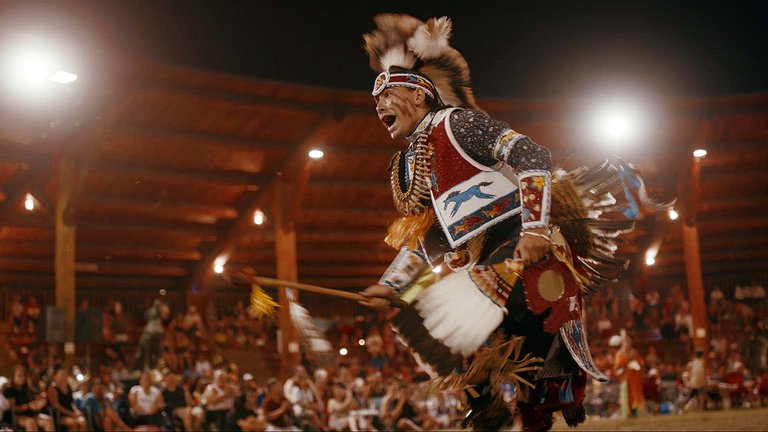
Now, let's go to 20th century North America. In both the United States and Canada, indigenous populations existed in territories where churches were built and next to or near them residential schools (boarding schools) were built that indigenous children were required to attend. It was a not at all subtle way of assimilating them into the dominant Western culture and, over time, their cultural roots, traditions and beliefs, disappeared. All in the name and under the will of the Lord, of course.
Ahora bien, vayamos a la América del Norte del siglo XX. Tanto en EEUU como en Canadá existían poblaciones indígenas en territorios en donde se construyeron iglesias y junto a estas o cerca de las mismas se edificaron escuelas residenciales (internados) a los que los niños indígenas debían asistir obligatoriamente. Era una forma para nada sutil de asimilarlos a la cultura occidental dominante y de que, con el tiempo, sus raíces culturales, tradiciones y creencias, desaparecieran. Todo en el nombre y bajo la voluntad del Señor, por supuesto.
Sugarcane focuses on just one of those boarding schools. Just one. Out of hundreds. It's important to highlight this aspect because it's so eerie what happened around that one place that it's inconceivable to imagine what could have happened throughout the system. Sugarcane shows a detail of a painting that is much larger. And horrifying. Because the documentary begins with a painful discovery: more than two hundred unidentified graves around the boarding school, whose graves are these? of indigenous children, and why are they unidentified? Because they were not to be discovered. It was one of the darkest secrets of the place, but it's not the only atrocity, because for years the children who attended (or rather were sometimes forcibly taken to these schools) denounced having been victims of physical and sexual abuse at the hands of the priests of the place. Beatings, punishments, rapes and murders committed by the men of the church or with their complicity fill folders and folders of cases that nobody wanted to investigate until members of the Sugarcane community began to talk, to search, to denounce, until they found the truth. Indigenous members, born in the boarding school, who in their DNA test show 50% Scottish blood (the priests were Europeans), men and women who turned to alcoholism as a way to forget the pain and overcome memory with oblivion, fragmented families, cases of unsolved disappearances... all committed in the name of God by men, not weak, but directly evil and who were part of an institution that systematically favored and covered up these facts for many years.
Sugarcane se centra en uno solo de esos internados. Uno solo. De cientos. Es importante resaltar este aspecto porque es tan espeluznante lo que sucedió alrededor de ese lugar que resulta inconcebible imaginar lo que pudo haber ocurrido en todo el sistema. Sugarcane muestra un detalle de una pintura que es mucho más grande. Y horrenda. Porque el documental comienza con un descubrimiento doloroso: más de doscientas tumbas no identificadas en los alrededores del internado, ¿de quién son estas tumbas? de niños indígenas, y ¿por qué no están identificadas? Porque no debían ser descubiertas. Era uno de los secretos más oscuros del lugar, pero no es la única atrocidad, pues durante años los niños que acudían (o que más bien se llevaban a veces a la fuerza para internarlos en estas escuelas) denunciaron haber sido víctimas de abusos físicos y sexuales a manos de los sacerdotes del lugar. Golpizas, castigos, violaciones y asesinatos cometidos por los hombres de la iglesia o con su complicidad llenan carpetas y carpetas de casos que nadie quiso investigar hasta que miembros de la propia comunidad de Sugarcane comenzaron a hablar, a buscar, a denunciar, hasta dar con la verdad. Miembros indígenas, nacidos en el internado, que en su examen de ADN muestran un 50% de sangre escocesa (los sacerdotes eran europeos), hombres y mujeres que se entregaron al alcoholismo como forma de olvidar el dolor y vencer la memoria con olvido, familias fragmentadas, casos de desapariciones sin resolver... todo cometido en el nombre de dios por hombres, no débiles, sino directamente malvados y que formaban parte de una institución que sistemáticamente propició y encubrió estos hechos durante años.
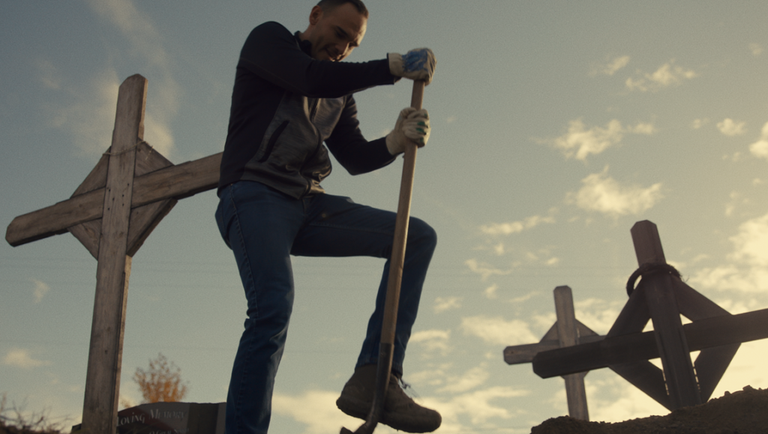
Isn't killing the identity of an entire people also a genocide? Sugarcane shows a painful hidden past (until now), but also a painful present and one of the most heartbreaking things is seeing these men and women, now elderly, evoke that time and those years with tears in their eyes. How long have they lived with so much pain and without anyone doing anything for them! Now at least the truth of many cases is known, responsibilities and culprits can be determined in some cases, but is it enough? Isn't it too late? The modern world is literally built on the bones of our ancestors. And I repeat, this documentary talks about only one of those schools. One. And there were hundreds, how many more do we not know?
Matar la identidad de todo un pueblo ¿no es también un genocidio? Sugarcane muestra un doloroso pasado oculto (hasta ahora), pero también un doloroso presente y una de las cosas más descorazonadoras es ver a estos hombres y mujeres, ya ancianos, evocar esa época y esos años con lágrimas en sus ojos ¡cuánto tiempo viviendo con tanto dolor y sin que nadie hiciera nada por ellos! Ahora al menos se sabe la verdad de muchos casos, se pueden determinar responsabilidades y culpables en algunos casos, pero ¿es suficiente? ¿acaso no es demasiado tarde? El mundo moderno está edificado literalmente sobre los huesos de nuestros ancestros. Y repito, este documental habla de una sola de esas escuelas. Una. Y hubo cientos, ¿cuánto más no sabemos?
In addition to the relevance of this story in itself, we must highlight the cinematography work done in Sugarcane. There are beautiful sequences and shots that play with lights, shadows and metaphors. The opening scene is one of the best synthesis I have seen in any film. All the pain of the 107 minutes of the documentary can be summarized in that first minute in which we see... it's better not to tell you what they show so that you are encouraged to see the film. To date, Sugarcane, whose credits include Lily Gladstone (Killers of the Flower Moon) as producer, has garnered more than a dozen awards including Best Documentary awarded by the North American Film Critics Association and the award for Best Director at the Sundance Festival. A good record for a film of this type, but will they be able to win the golden statuette next March 2? The competition is complex: an investigation into abuse and missing children at an indigenous boarding school; the eradication of Palestinian villages by Israeli soldiers who expel them from their homes; a story that mixes jazz and decolonization; beauty amid the destruction of war in the context of the conflict between Russia and Ukraine; and the iconic sexual abuse case that exposed and cracked Japan's judicial and social system. Five relevant, painful, important stories. Five very well made documentaries, but only one of them will manage to take home the Oscar, which one will it be? Which of these have you seen? I read you in the comments.
Además de la relevancia de esta historia por sí misma, hay que destacar el trabajo de cinematografía realizado en Sugarcane. Hay secuencias y tomas bellísimas que juegan con luces, sombras y metáforas. La escena inicial es una de las mejores síntesis que he visto en película alguna. Todo el dolor de los 107 minutos del documental se pueden resumir en ese primer minuto en el que vemos... mejor no les digo qué muestran para que se animen a ver el film. A la fecha, Sugarcane, en cuyos créditos aparece Lily Gladstone (Killers of the Flower Moon) como productora, ha cosechado más de una decena de premios incluyendo el de Mejor Documental entregado por la Asociación de Críticos Norteamericanos y el premio a Mejor Dirección en el Festival de Sundance. Un buen palmarés para una película de este tipo, pero ¿podrán alzarse con la estatuilla dorada el próximo 02 de marzo? La competencia está compleja: una investigación sobre abusos y niños desaparecidos en un internado indígena; la erradicación de los pueblos palestinos a manos de soldados israelíes que los expulsan de sus casas; una historia que mezcla el jazz y la descolonización; la belleza en medio de la destrucción de la guerra en el marco del conflicto entre Rusia y Ucrania; y el emblemático caso de abuso sexual que expuso y agrietó el sistema judicial y social de Japón. Cinco historias relevantes, dolorosas, importantes. Cinco documentales muy bien realizados, pero sólo uno de ellos logrará llevarse el Oscar a casa, ¿cuál será? ¿cuáles de estos han visto? Los leo en los comentarios.
Reseñado por @cristiancaicedo
Other posts that may interest you | Otros posts que pueden interesarte:
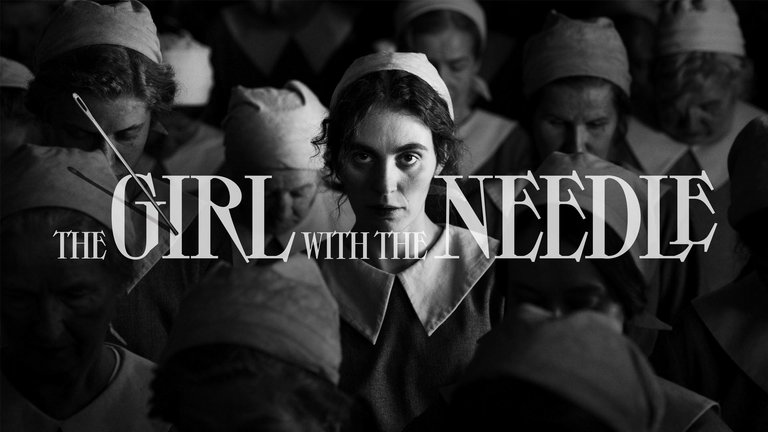 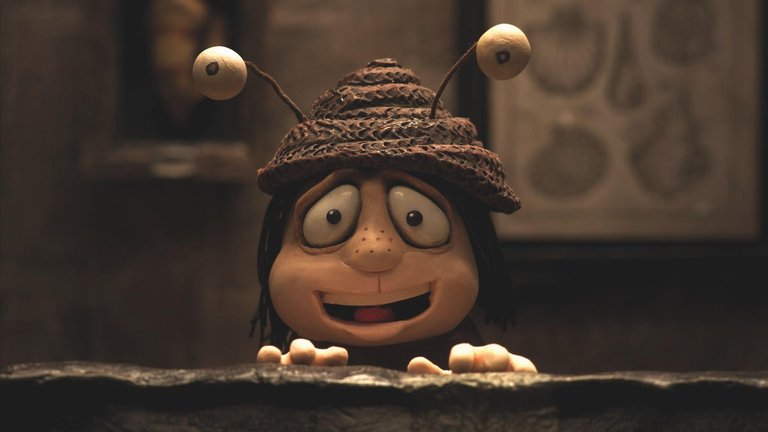 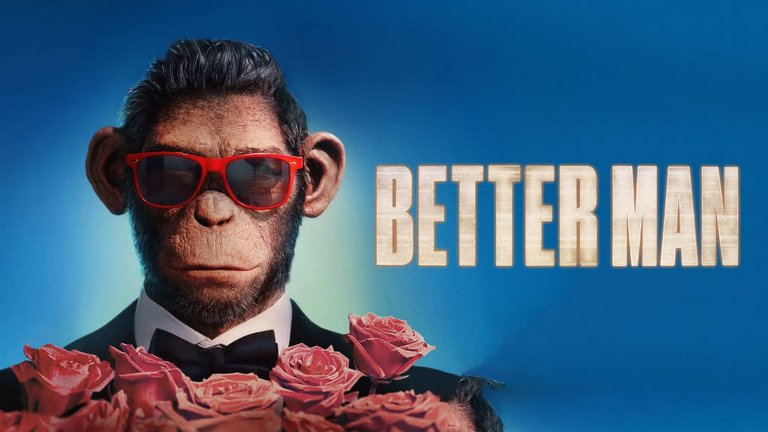 |
|---|
